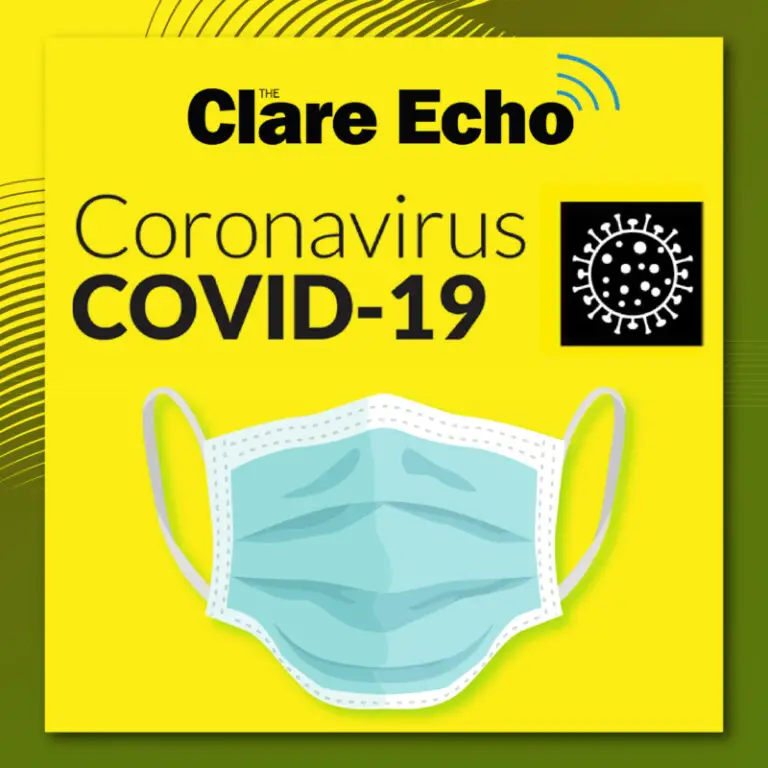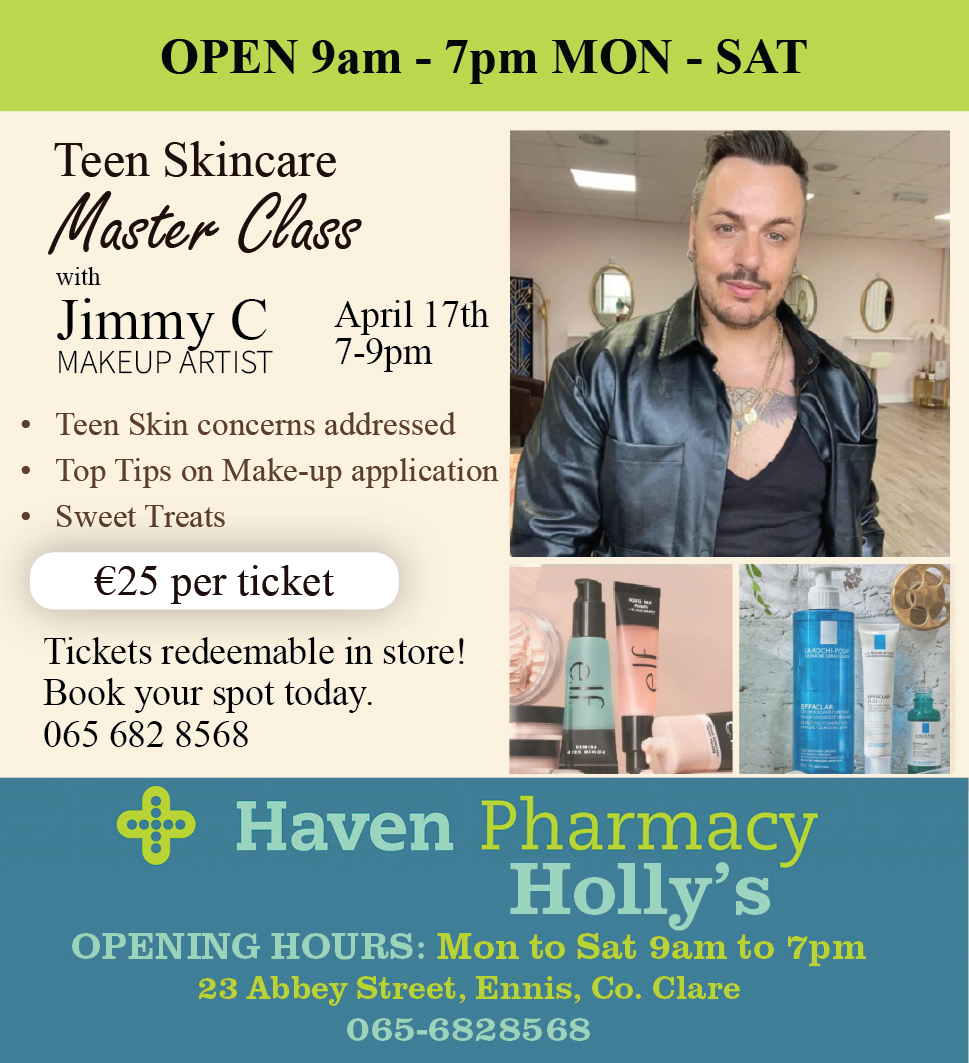Clare has recorded 47 new cases of COVID-19 while there have been 3,231 nationally and a further 60 deaths.
A further decrease in the amount of daily cases has been observed for Clare. The county has the ninth highest 14 day incidence rate per 100k of the population at 1596.8. Within the past fortnight, 1,897 cases have been reported in Clare.
Across the Republic of Ireland, 3,231 new cases are known. 931 cases are in Dublin, 388 in Cork, 238 in Louth, 155 in Waterford, 151 in Limerick and the remaining 1,368 cases are spread across all other counties.
Health officials have confirmed than an additional 60 people have died because of the virus. 59 of these were in the month of January and one in December, one other death has been de-notified by the Health Protection Surveillance Centre. The age range of those deceased is between 65 to 100.
191 persons are receiving critical care as of 2pm on Saturday, they are included in the figure of 1,854 currently in hospitals. 119 hospitalisation were observed in the last 24 hours.
“This virus has taken root in every single part of the country. A significant percentage of the population – in excess of 1 in 10 in some counties – is currently either a case or a close contact. This is a huge burden of infection,” the Chief Medical Officer stated.
Dr Tony Holohan continued, “The improvements in cases is not happening fast enough. Too many people are still not complying as fully as we need with the advice. There are early indications that we may be levelling off in terms of improvement, but at far, far too high a level of infection. The UK variant is very likely making our challenge more difficult”.
Given the nature of the mutation found in the UK variant of the virus, “it is inevitable that it will become the dominant variant here in Ireland over time,” Dr Cillian De Gascun, Medical Virologist and Director of the National Virus Reference Laboratory, said.
De Gascun explained, “The UK variant has adapted to us: simply put, it is better at moving from person to person when we come into contact. So what we must do is reduce its opportunities to spread by cutting out socialising. Stay home. Do not visit anyone else’s home. Do not attend illegal gatherings. Remember the simple and effective measures from springtime – wash your hands well and often, wear a mask, cough and sneeze into your elbow, keep 2 metres of space from others, and phone your GP at the very first sign of COVID-19 symptoms”.


















